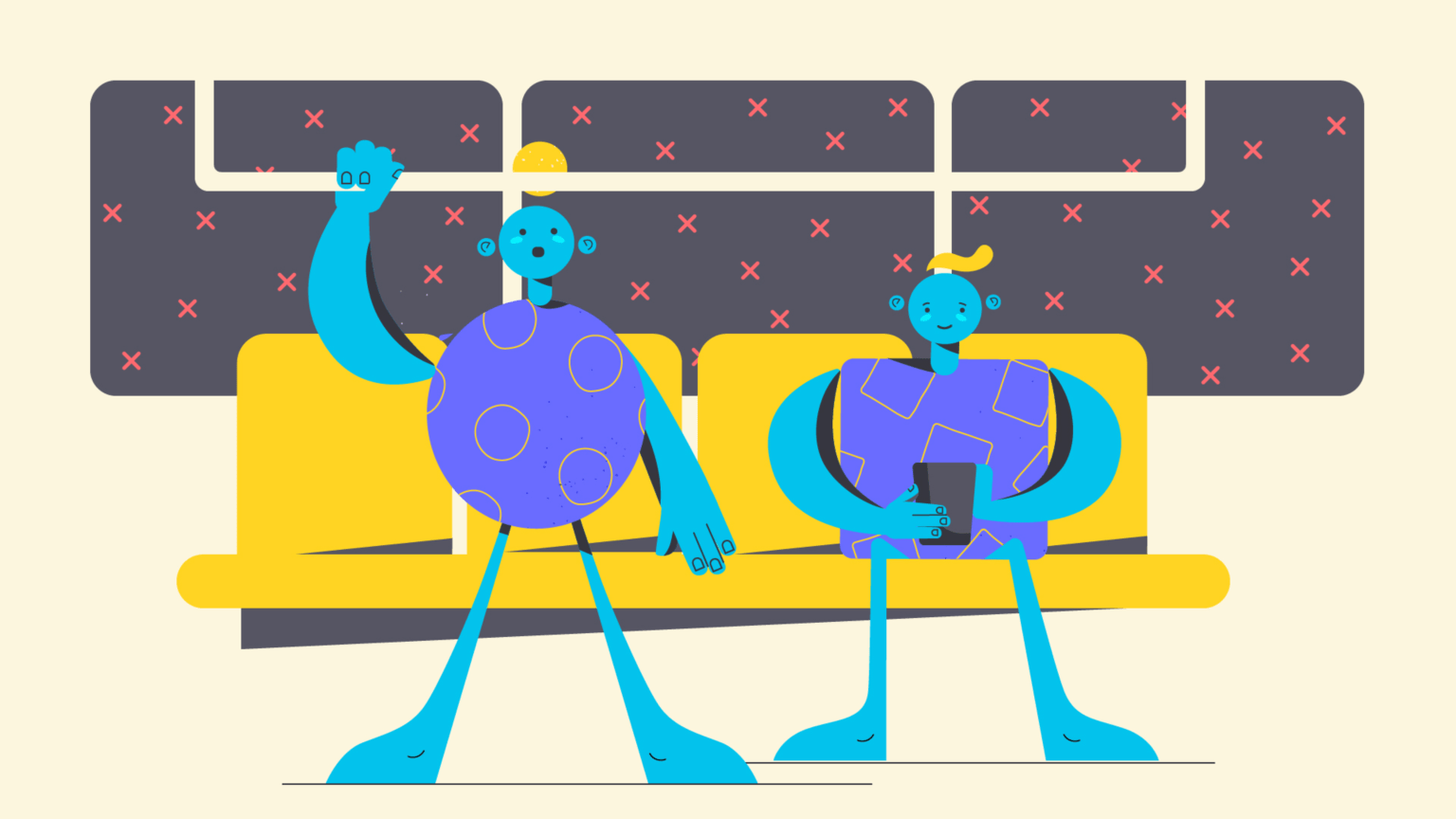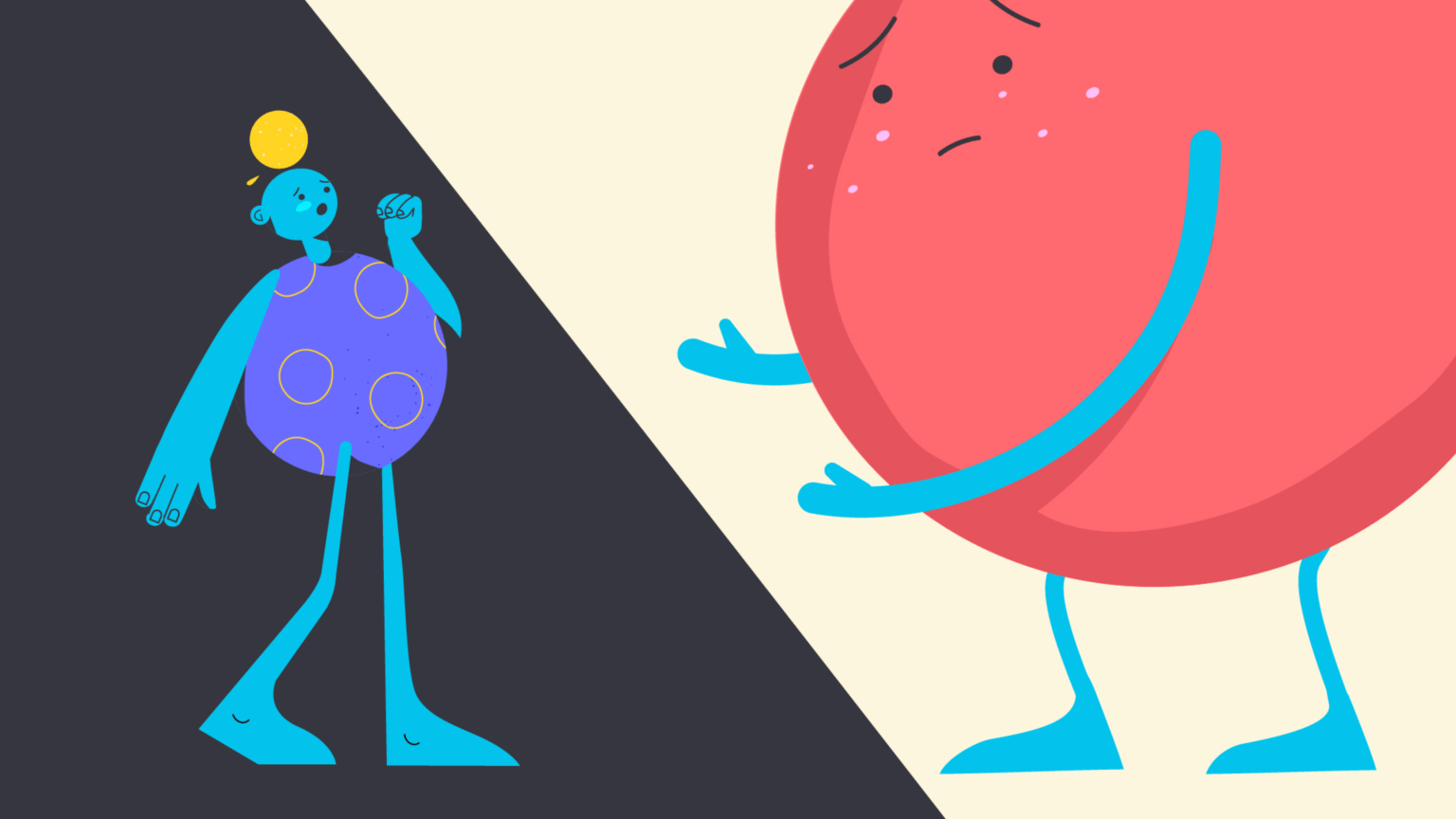
Panik
26. April 2021 — 4 Minuten Lesezeit
Jeder hat Angst. Und das ist auch gut so! Werden die Ängste jedoch stärker, häufiger, langandauernder und unkontrollierbar, spricht man von einer Angststörung.

Jeder hat Angst. Und das ist auch gut so! Denn sie geleitet uns sicher durch unseren Alltag, indem sie uns immer wieder auf kleinere und größere Gefahren in unserer Umwelt aufmerksam macht und dafür sorgt, dass wir entsprechend auf diese reagieren. Sei es, dass wir uns im Auto anschnallen, am Geländer festhalten, vor einem heran brausendem Fahrrad oder einer Biene zurückschrecken, oder bei Gewitter im Haus bleiben. Die Tatsache, dass wir Angst haben, sorgt in den meisten Fällen dafür, dass wir unversehrt bleiben. Fehlt jedoch eine reelle, äußere Bedrohung und die Ängste werden stärker, häufiger, langandauernder und unkontrollierbar, spricht man von einer Angststörung.
In der Psychologie werden folgende Angststörungen voneinander unterschieden: Es gibt welche ohne konkreten Auslöser, wie die Panikstörung und die Generalisierte Angststörung, und solche mit konkreten Auslösern, diese erkennt man an der Wortendung – phobie(n): Agoraphobie, Soziale Phobien und Spezifische Phobien.
Bei einer Panikstörung leiden Betroffene unter immer wiederkehrenden Panikattacken mit ausgeprägten körperlichen und psychischen Symptomen. Die Attacken sind dabei nicht an spezifische Situation oder Umstände gekoppelt und treten somit nicht vorhersehbar auf. Betroffene leben zumeist in der Angst vor dem nächsten Panikanfall. Ein Teufelskreis aus Angst vor der Angst entsteht. Zudem kommen Befürchtungen, lebensbedrohlich erkrankt zu sein oder verrückt zu werden.
Wenn mindestens vier der folgenden Symptome zusammen auftreten und keine körperlichen Erkrankungen vorliegen, lässt sich Rückschluss auf eine Panikattacke ziehen:
Oftmals beginnen Betroffene Situationen und Orte, in denen sie einen Panikanfall hatten, oder bestimmte Aktivitäten, die sie damit in Verbindung bringen, zu vermeiden. Dieses Vermeidungsverhalten kann den Alltag enorm einschränken und eine weitere Angststörung zur Folge haben: die Panikstörung mit Agoraphobie.
Agoraphobie (auch „Platzangst“ genannt) ist eine Angststörung, bei der Ängste und Panik durch bestimmte Situationen und Orte, wie z.B. Geschäfte, Kinos, Fahrstühle, Menschenmengen, öffentliche Plätze oder Verkehrsmittel ausgelöst werden. Angstbesetzte Umgebungen können dabei Paniksymptome hervorrufen und werden deshalb stark gemieden. Vordergründig ist dabei die Angst, im Notfall nur schwer entkommen zu können und/oder Hilfe zu erhalten. Im Extremfall können Betroffene die eigene Wohnung nicht mehr verlassen.
Menschen mit Sozialer Phobie haben große Angst vor einer negativen Bewertung anderer, sich zu blamieren oder als merkwürdig empfunden zu werden. Sie schämen sich für ihr eigenes Verhalten und sichtbare Angstreaktionen (Schwitzen, Zittern, Erröten). Somit besteht eine Angst vor sozialen Situationen und Interaktionen, bei denen sie im Zentrum der Aufmerksamkeit stehen. Diese Situationen werden soweit möglich vermieden oder nur unter größter Angst bis hin zu Panikattacken durchgestanden. Auch im Nachhinein grübeln Betroffene noch lange über die Situation nach und befürchten unangenehm aufgefallen oder bewertet worden zu sein. Das soziale Leben wird dadurch stark eingeschränkt. Betroffene haben häufig Probleme, Partner:innen und Freund:innen zu finden, leben sozial isoliert und können auch beruflich ihr Potenzial nicht voll entfalten.
Betroffene einer GAS leiden unter anhaltenden und diffusen Ängsten, Besorgnis und körperlicher Anspannung. Ängste beziehen sich dabei oft auf alltägliche und finanzielle Ereignisse und Probleme, aber insbesondere auch Besorgnis darüber, dass man selbst oder Angehörige schwer erkranken oder verunglücken könnten. Die Sorgen werden als kaum oder gar nicht kontrollierbar und stark belastend empfunden. Hinzu kommen können neben Paniksymptomen auch Symptome wie Ruhelosigkeit, Magen-Darm-Beschwerden, Konzentrationsprobleme, Reizbarkeit, Schlafstörungen und Herz-Kreislauf-Probleme.
Bei einer spezifischen (isolierten) Phobie haben Betroffene starke Angst vor konkreten Objekten oder Situationen. Soziale, alltägliche und berufliche Lebensaspekte werden dabei erheblich eingeschränkt.
Häufig bestehen Ängste vor Tieren (z.B. Spinnen, Hunde), Naturgewalten (z.B. Gewitter, Gewässer), Verletzungen (z.B. Spritzen, Blut) oder Situationen (z.B. Flugangst, Höhenangst, Tunnel).
Betroffene meiden gefürchtete Objekte/Situationen oder halten diese nur unter starken Ängsten aus. Zudem sind sie sich bewusst darüber, dass von dem Objekt oder der Situation keine konkrete Gefahr ausgeht und die starke Angstreaktion unverhältnismäßig ist.